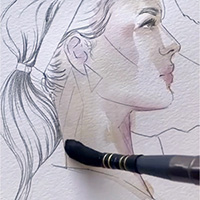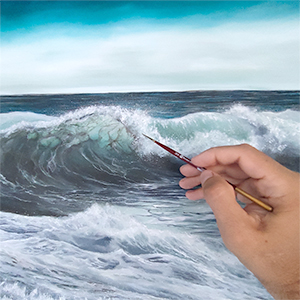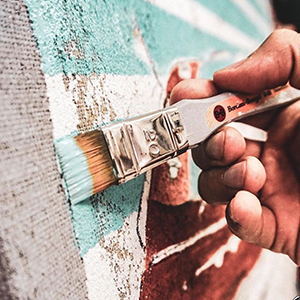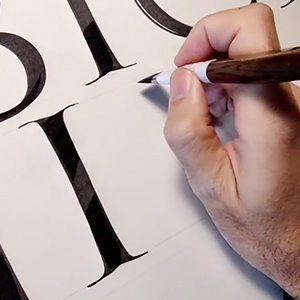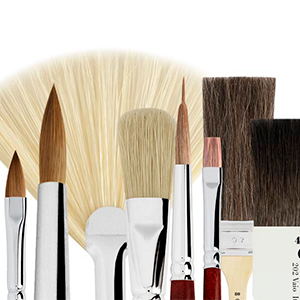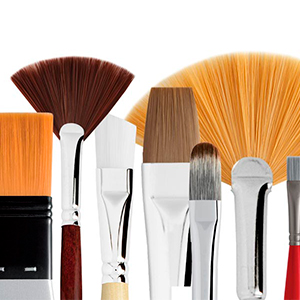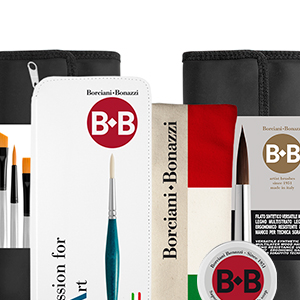The technique of Gouache or “Guazzo”
The technique of Gouache or "Guazzo"
The technique of guazzo or, in French, of gouache, which is increasingly catching on among "rediscovered" artistic techniques, employs a type of pigment that has the same nature as tempera, but is made slightly more solid by adding plaster or white lead together with a compound of gum arabic.
The final solution is a pigment with a slightly duller colour than normal tempera. Already known and used in Europe in the sixteenth century, it was mainly used to make preliminary sketches for large oil works.
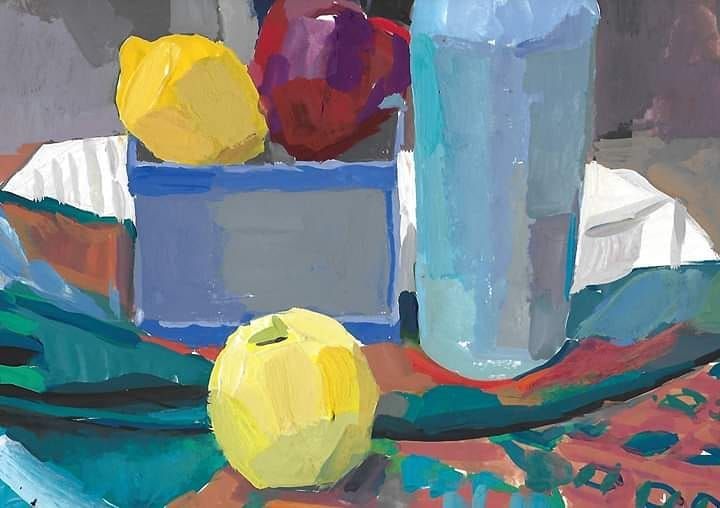
The Gouache technique
The great Italian decorative painters made great use of it for the sketches of the large fresco in the Renaissance palaces.
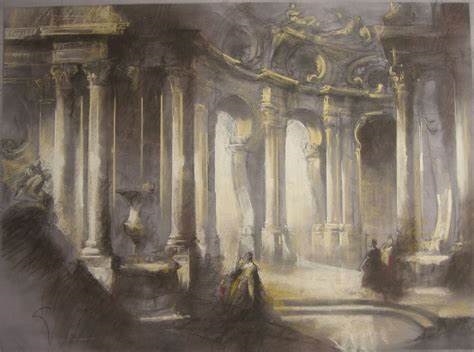
In the eighteenth century it spread to France and in the nineteenth century it was widely used for the creation of advertising signs.
Dilutable in water, unscented and quick-drying, due to its composition it has a high reversibility feature, and therefore allows retouching the colours even if already spread and dried and permits to obtain shades equal to those of oil paint, in an opaque variant.
The result is very opaque and satin.
A gouache work, at first sight, can very well be confused with an oil painting. Its brightness, given by its typical pearly colour, derives precisely from the addition of white lead or plaster.
This technique is still happily used in the production of decals, papier paint and in the current scenographic environments.
In foreign countries, the term gouache is often used instead of tempera, while the presence of gum arabic in the composition (also present as a binder in watercolour) makes this type of paint more elastic and dilutable in water without losing chromatic intensity; if we necessarily wanted to give a definition, it could be defined as a covering and concentrated watercolour.
This is the best for long projects because it can be rehydrated and used several times.
The problems that this technique have always brought with it are three:
- The pigment that is spread on the painting surface has a colour that changes during the drying process, the plaster tends to lighten the shade by almost 2 tones, so when you work in several stages this must be considered.
- The painter should pay attention to the thickness of the layer to be applied, because micro-cracks can appear, given by the amount of plaster inside the composition, which remains even after the drying process, reducing the uniformity and beauty of the painting.
- The painter should also pay attention to the painting surface, which must be very absorbent, such as paper, cardboard, terracotta or prepared with acrylic plaster, to ensure that the gouache does not come off.
What are the ideal brushes for this type of technique?
The ideal brushes for the painting technique of the gouache are the series 105 and series 107 Borciani and Bonazzi in sable, but not only, even the extra fine ox of the series 75 Borciani and Bonazzi is a guarantee, being a particularly opaque yield.
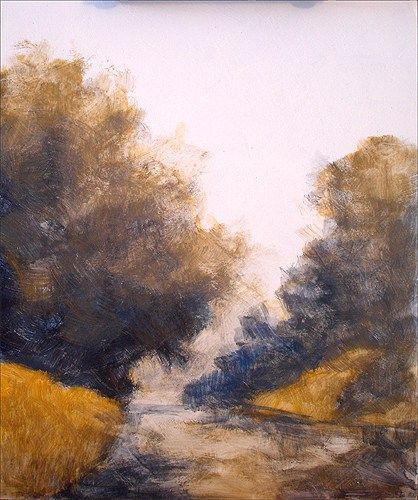
We recommend to visit the dedicated section to gouache brushes to discover the most suitable brushes for this medium. In any case, the ideal brush is based on the pictorial effect that you want to obtain;
In fact, with the addition of a substance called “acquapasto” that can be mixed with the color and makes it made more consistent, almost material, further shortening the drying time, but creating the ridges characteristic typical of thick oil painting.
So if we want to use a full-bodied color, on the other hand pictorial impact, we can paint with traditional bristle brushes or with synthetic alternatives: fibers and semi-rigid fibres like those found in the category of synthetic fibres "The Extra strong", moving the dense color and leaving the trace in the color.
Ideal for a more defined and thin painting technique are the series with soft and defined natural brushes and synthetic brushes, that do not leave traces but are able to move the color thanks to their elasticity.
For the supporters of the natural hair, the series 105 and series 107 series Borciani and Bonazzi in Sable, but not only, also the extra fine ox of the 75 series Borciani and Bonazzi are a guarantee, being a particularly covering yield that must be "pulled".
For those who prefer synthetic fiber, we recommend fine gold synthetic lines and synthetic imitations of sable and mongoose, versatile and cruelty free.
Thanks to the very soft, elastic and absorbent fibers they lend themselves very well to the gouache in a painted finish similar to diluted oil, giving the pearly finish that we like so much. For larger backgrounds you can use the brushes in soft white fibre of the 300 series, and the synthetic fine gold brushes.
The gouache leaves no trace on the fibers, and is perfectly reversible in water but ideal is to use a series of brushes only for this technique. The brushes are washable with warm or cold water, and to keep better over time and eliminate any remaining pigment, it is advisable to use Borciani and Bonazzi vegetable soap in the practical aluminum box.
























